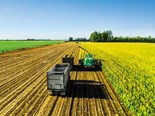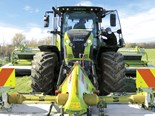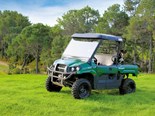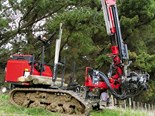Test: McHale Fusion3 Plus
Farm Trader puts the McHale Fusion3 Plus through its paces to see why so many farmers and contractors are choosing the Irish-made machines
There are plenty of options when purchasing a combi baler/wrapper. Most tractor brands, as well as a handful of other machinery manufacturers, produce their own version of these efficient machines, so I was keen to see why so many farmers and contractors are choosing the Irish-made McHale machines.
 |
|
A smart-looking set-up of McHale Fusion balers with Deutz-Fahr tractors providing the horsepower
|
It’s a perfect time of year to satisfy my curiosity. With the welcome onset of spring and daylight savings, the extra grass growth many regions have experienced means it’s now time to focus on the management of surplus for use at a later date.
This means long hours, often around the clock, for contractors as they turn this grass into high-quality supplement feed for farmers. Commonly spotted behind contractor tractors are the McHale Fusion balers, so it was no great difficulty to take a closer look at one in action.
Pickup
 |
|
Auto bale drop just before the finished bale is transferred from the chamber for wrapping
|
The split drive gearbox divides power evenly between the rollers in the chamber, the pickup, and the chopper unit. Like many, McHale has opted for camless pickup as a standard feature, decreasing the number of moving/wearing parts in this area.
Galvanised pickup bands and the six row tine bar handle the tough job of getting grass off the ground and into the baler. At 2.1 metres, it should eat up even the largest windrows with no problems.
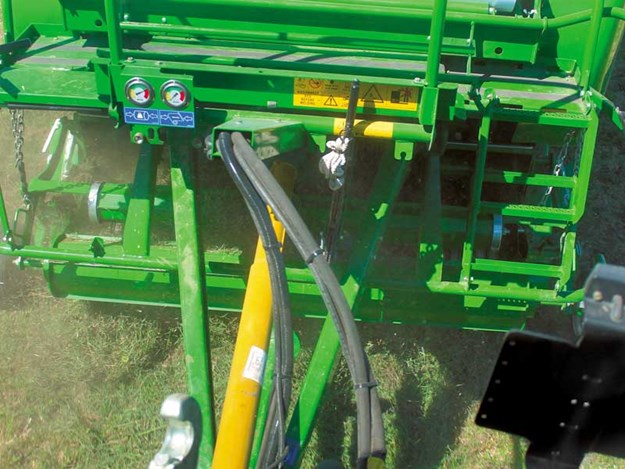 |
|
A view from the cab of the 2.1m wide, camless pickup
|
A double crop roller ensures even feed of material to pick up and rotor. Refinements have been made to the crop augers and feed rotor – both have been made larger while an adjusted floor angle offers increased intake and crop flow to the chamber. The flexible floor system further improves intake and bale density while decreasing the chances of blockages.
Should a blockage occur, the hydraulic drop floor should have you back underway pretty smartly.
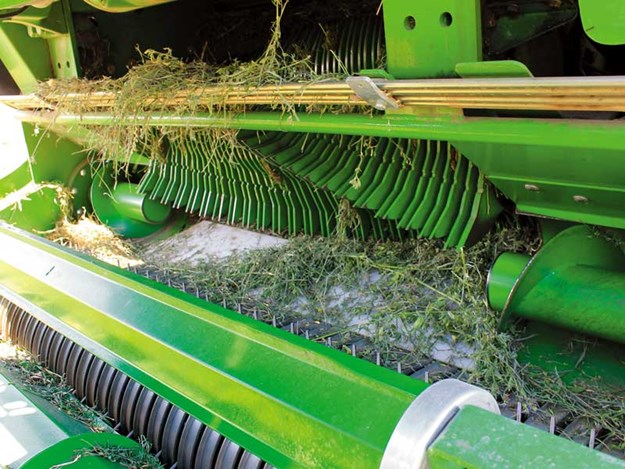 |
|
Design refinements have been made to pick up as well as feed augers and rotor
|
Monitor
The iTouch colour monitor certainly makes control of the baler pretty simple. Although a lot of function has been automated already, it’s good to have the information displayed to keep an eye on progress.
The incorporation of two cameras shows what you would not otherwise see of the baling process from the cab, and in the same monitor, so the cab doesn’t get cluttered up with display monitors and screens.
Film on film
 |
|
Film on film or net binding is a feature of the McHale Fusion3 Plus
|
The ability to apply film as the initial wrapping layer is a relatively new feature available on fixed chamber round balers such as the McHale Fusion3 Plus.
The McHale uses the specifically designed wide mantle film on the front of the machine. Benefits in terms of the quality of silage produced (due to more air removal and greater stretch) can be achieved over using the more traditional net wrap.
Technology and sensors are used to automatically adjust stretch to suit conditions; for example, as the day gets hotter and the the stretches easier, the machine accounts for this. A sensor checks that the bale has film before being transferred to the wrapper.
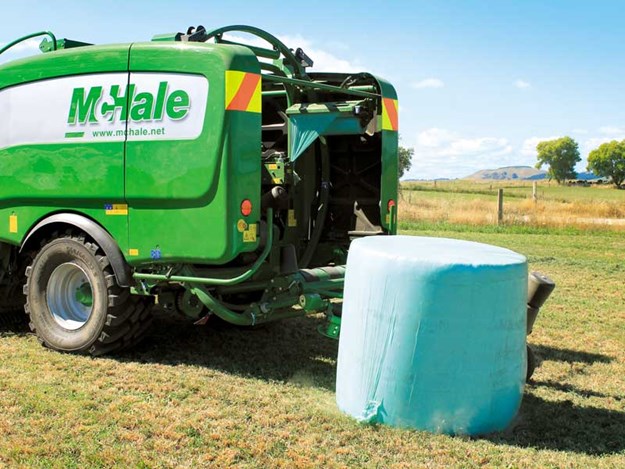 |
|
An example of a McHale Fusion3 bale
|
This efficient process also means that at feeding time, there’s only one material to deal with when opening the bale – faster for the farmer and cows and also a benefit for recycling purposes.
A new film/net loading device has been designed to make life easier at loading time. A gas strut makes lifting easier, folding out of the way when not in use.
Simple design features such as these shows the thought that has gone into these balers to make the job easier.
Although you can use film, the option of net is still available, which some may still favour.
Storage for net and film is part of the design, allowing you to change between the two if required, adding to the versatility of the Fusion3 Plus.
Wrapping
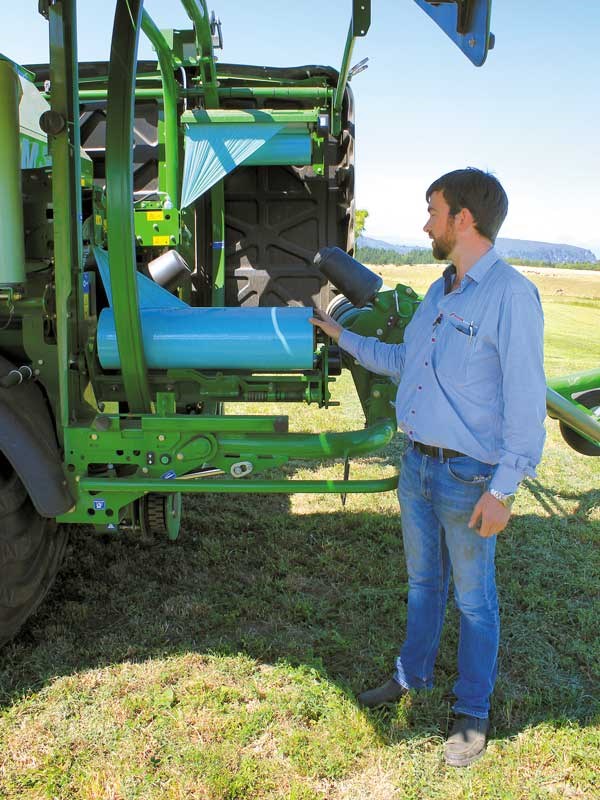 |
|
Vertical wrapping ring design gives McHale one of the most compact combo balers on the market
|
Wrapping is one area where McHale has not made big changes with its latest Fusion3 Plus model. The 18 roller bale chamber still splits like a clamshell, with the lower rollers forcing the bale up and out onto the wrapping table.
The bale transfer takes place over the axle to minimise stress loading on the tractor and baler. The vertical wrapping ring keeps the overall length and dimensions of the baler down, with an overall length of 5.8 meters. Wrap can be applied in two, four, or six layers. Two 750mm dispensers can apply four layers in 20 seconds or six layers in 30 seconds
Optional/additional features
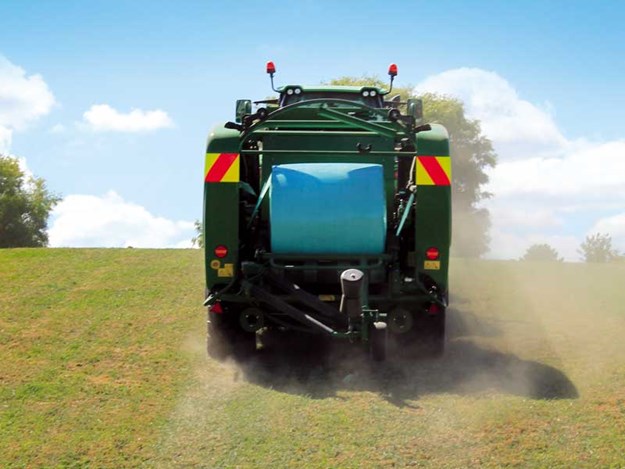 |
|
The optional bale end tipper leaves bales standing on their ends ready to be picked up
|
The ability to record bale weights using pressure transducers, when used in conjunction with optional printer, gives contractors the ability to provide accurate job details/records.
Details that can be included are bale numbers, wrapped/not wrapped, net or film, knives, average bale weight, and moisture as well as time and date notes relevant to the job.
Moisture metering is a live reading shown on the ITouch monitor. This works by conductivity across two probes in the bale chamber.
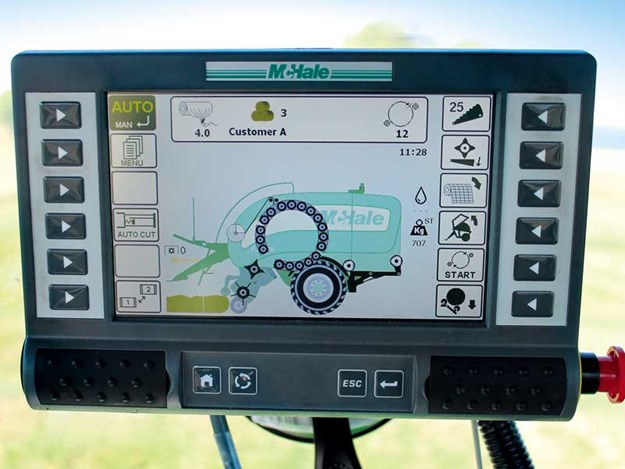 |
|
The iTouch monitor clearly shows bale making progress
|
The end tipper to rotate bales 90 degrees as they come off the wrapping table is a good option, as cut lucerne stalks have the potential to poke holes in wrapped bales. Other places it will be of use is on rolling country to minimise the chance of bales rolling away – never a good sight to see in your cab mirror.
Test drive
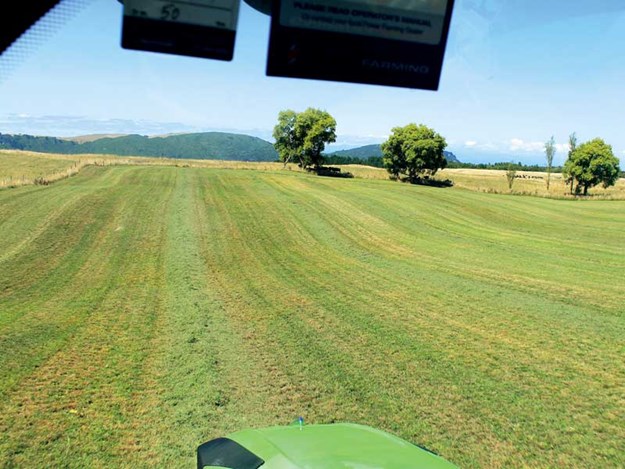 |
|
Making quick work of the light rows of lucerne for baling
|
I wouldn’t claim to be the most experienced baler driver in the country by a country mile, so when I say the McHale Fusion3 Plus is straightforward and easy to operate, it really is. Given what is a relatively complex and technical piece of machinery, after a brief introduction, I was able to get straight to work baling.
Automation of many of the functions removes much of the complexity. The touchscreen monitor in the cab tells you what stage baling is at as well as the wrapping progress.
Both cameras can be run on auto or manual modes and offer a clear view of the chamber to confirm wrap has gone on before the bale moves through to the wrapping table, where the second camera lets you check that transfer has happened correctly and wrapping is underway/finished before the bale is ejected.
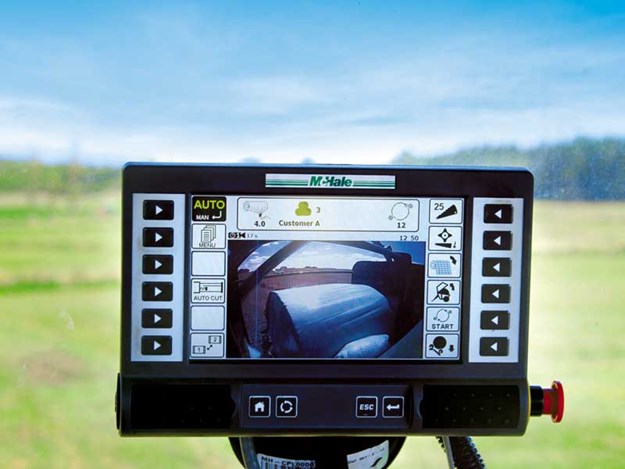 |
|
Two cameras come as standard. This view shows the wrapping table.
|
On the day of my test drive, we were baling lucerne. The Fusion3 Plus was pumping out bales around the 1000kg mark, which is pretty impressive. The dry season means the crop wasn’t overly heavy.
Even with the quad rotor making the rows, they were pretty light, so really didn’t provide an overly difficult challenge or test to the design in terms of feed rotor, pickup, etc. Some heavy spring grass silage would have showcased these features more fully.
Given that these balers have been developed over the last 30 years and designed and built in Ireland where conditions for baling silage are similar to that of New Zealand (possibly more difficult), you can expect that they’d handle pretty much anything we can throw at them here in New Zealand.
Verdict
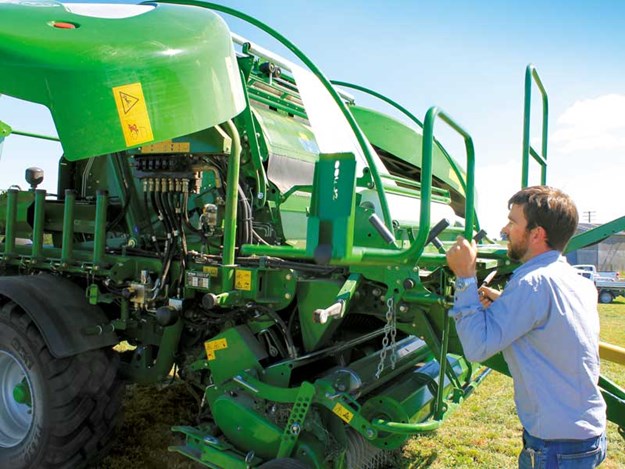 |
|
Demonstrating the new film/net loading system
|
Having now spent some time with the top-of-the-range McHale Fusion3 Plus, I can fully understand why there are so many of these balers operating around the country. Refinements and improvements taken from end-user input, such as the wrap lifting device, are well thought out and functional.
If you have an old baler in the shed that’s seen better days I suggest heading along to your local Power Farming dealer for a yarn about the McHale baler options. Or for a second opinion, talk to your local contractor. Chances are they could already be operating a McHale baler.
McHale Fusion3 Plus specifications
| Pickup width | 2.1m |
| Tine bars | 6 |
| Max number of knives | 25mm |
| Cut length | 46mm (approx.) |
| Unblocking system | Automatic drop floor |
| Number of rollers | 18 |
| Width/diameter | 1.23m/1.25m |
| Bale wrap | Film or net |
| Roll storage | 1+1 storage |
| Wrapping | |
| System | Vertical wrapping ring |
| Film storage | 10 Rolls + 2 on wrapper |
| Film layers | 2+2+2 System |
| Operation | Fully automatic electronic |
| Control system | iTouch |
| In-built cameras | 2x cameras |
| Tyres | 560/60R 22.5 standard |
| Road lights | Standard |
| Dimensions | |
| LxWxH | 5.8m x 2.76/2.94m x 3.02m |
| Weight | 5650kg |
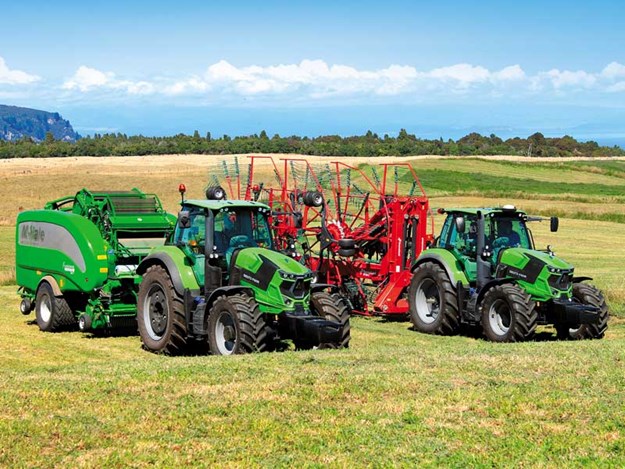 |
|
Ready for summer work
|
Pluses
- iTouch 7-inch, colour, touchscreen monitor
- Choice of film or net binding of bale before baling
- New net/film loading system
- Two built-in cameras as standard to keep an eye on baling/wrapping process
- 2.1m, galvanised, camless pickup with six rows of tines
- Bale weighing, moisture reading and bale density adjustment through in-cab monitor
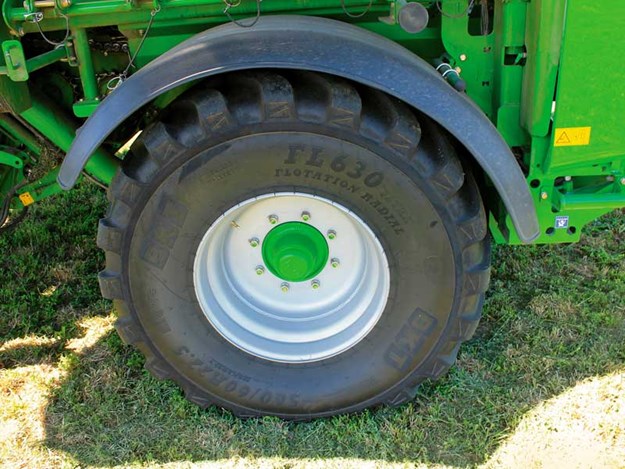 |
|
Single axle running 560/60R 22.5 tyres as standard
|
Minuses
- Being single axle, as opposed to double, can cause added soil compaction. Larger tyres are an option.
Find more bale wrappers for sale in NZ
Keep up to date in the industry by signing up to Farm Trader's free newsletter or liking us on Facebook








